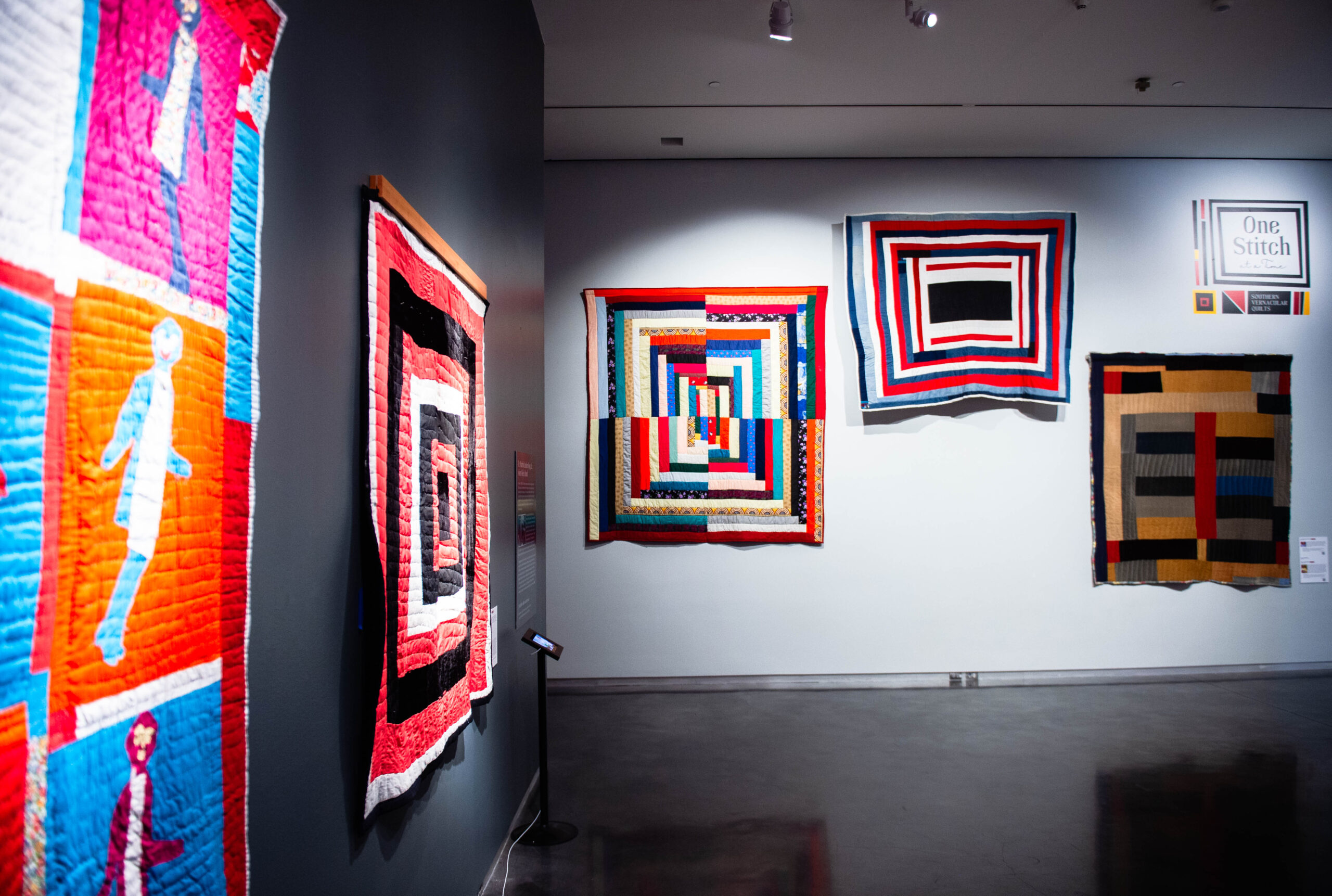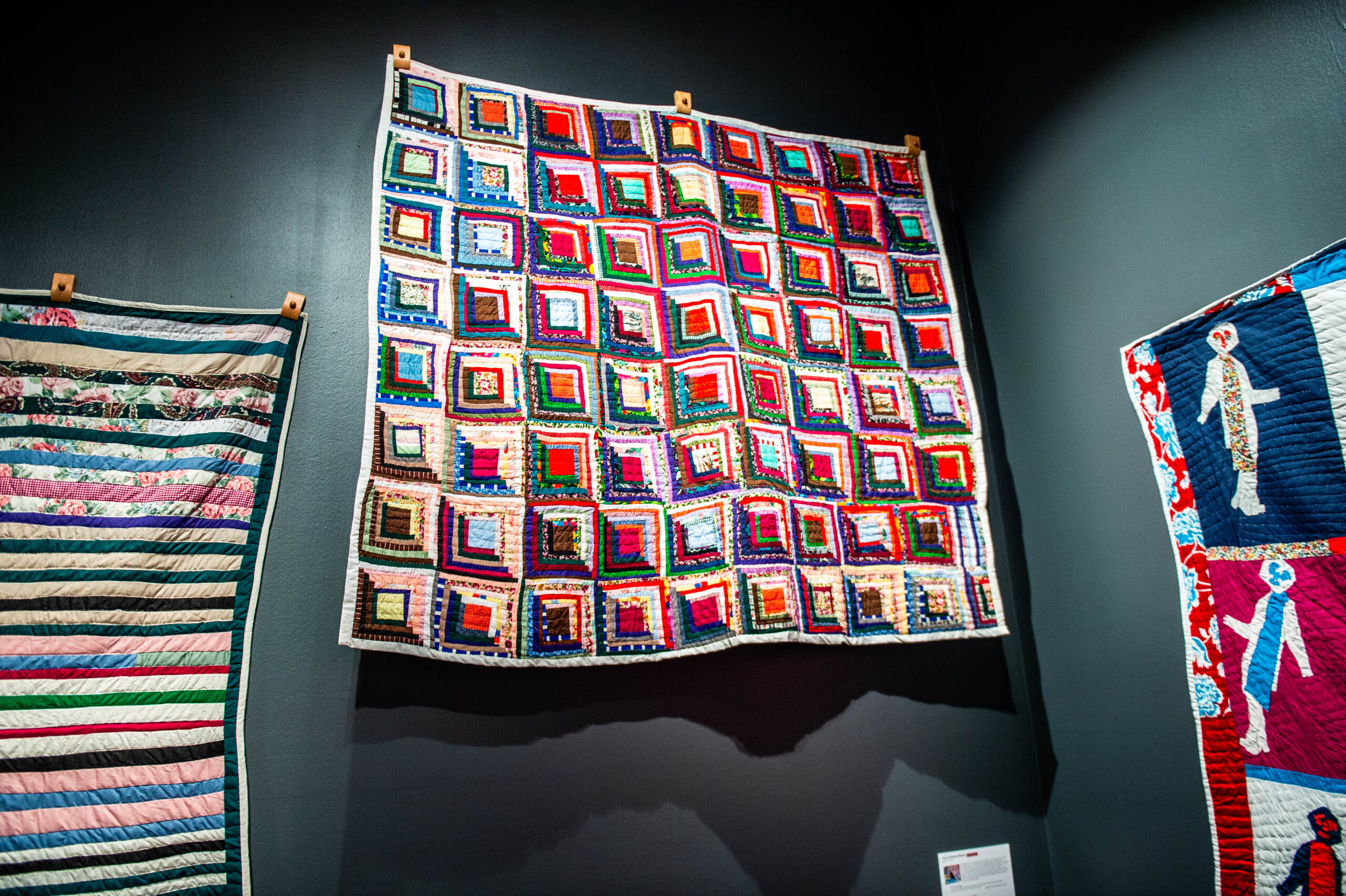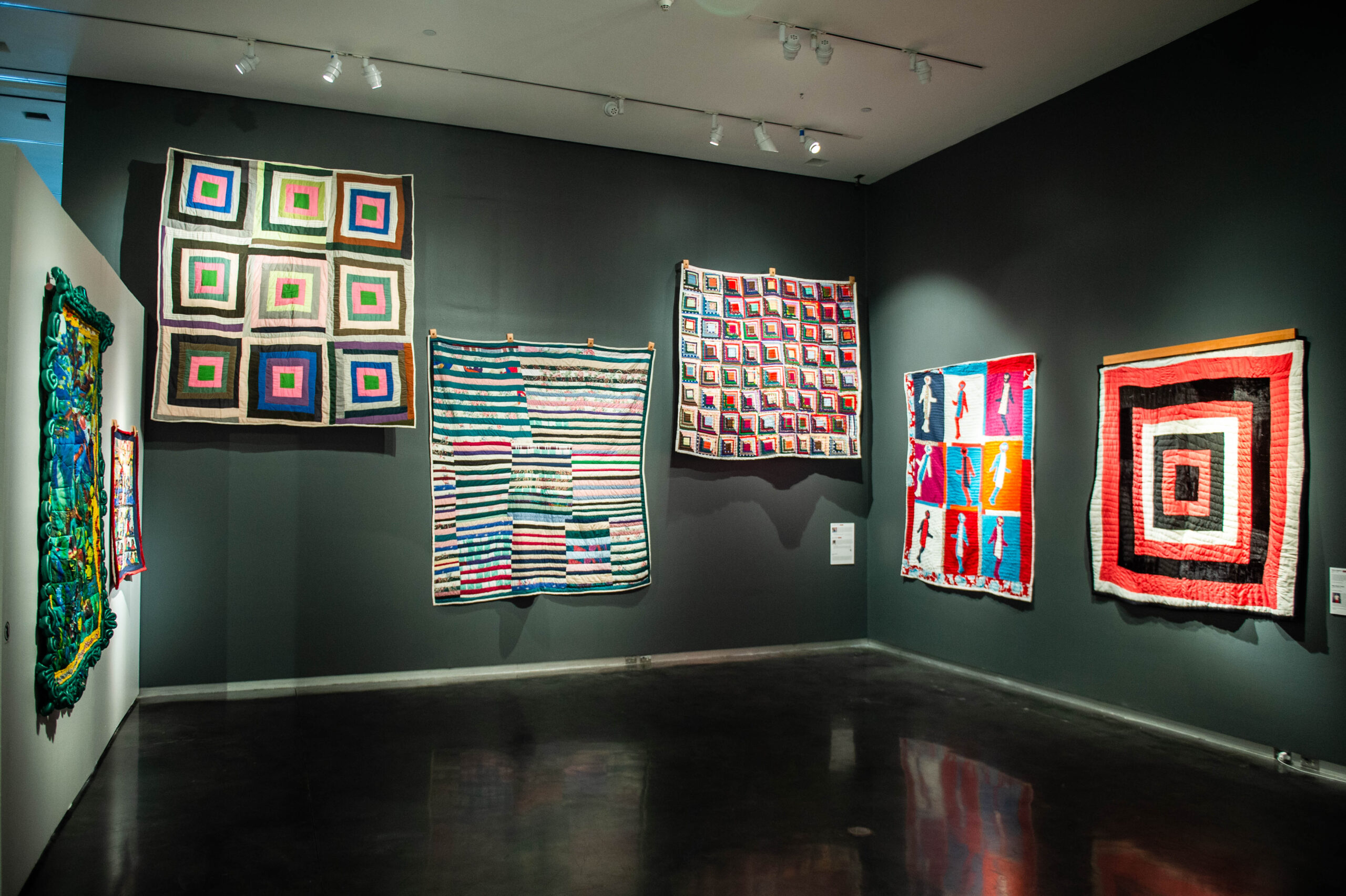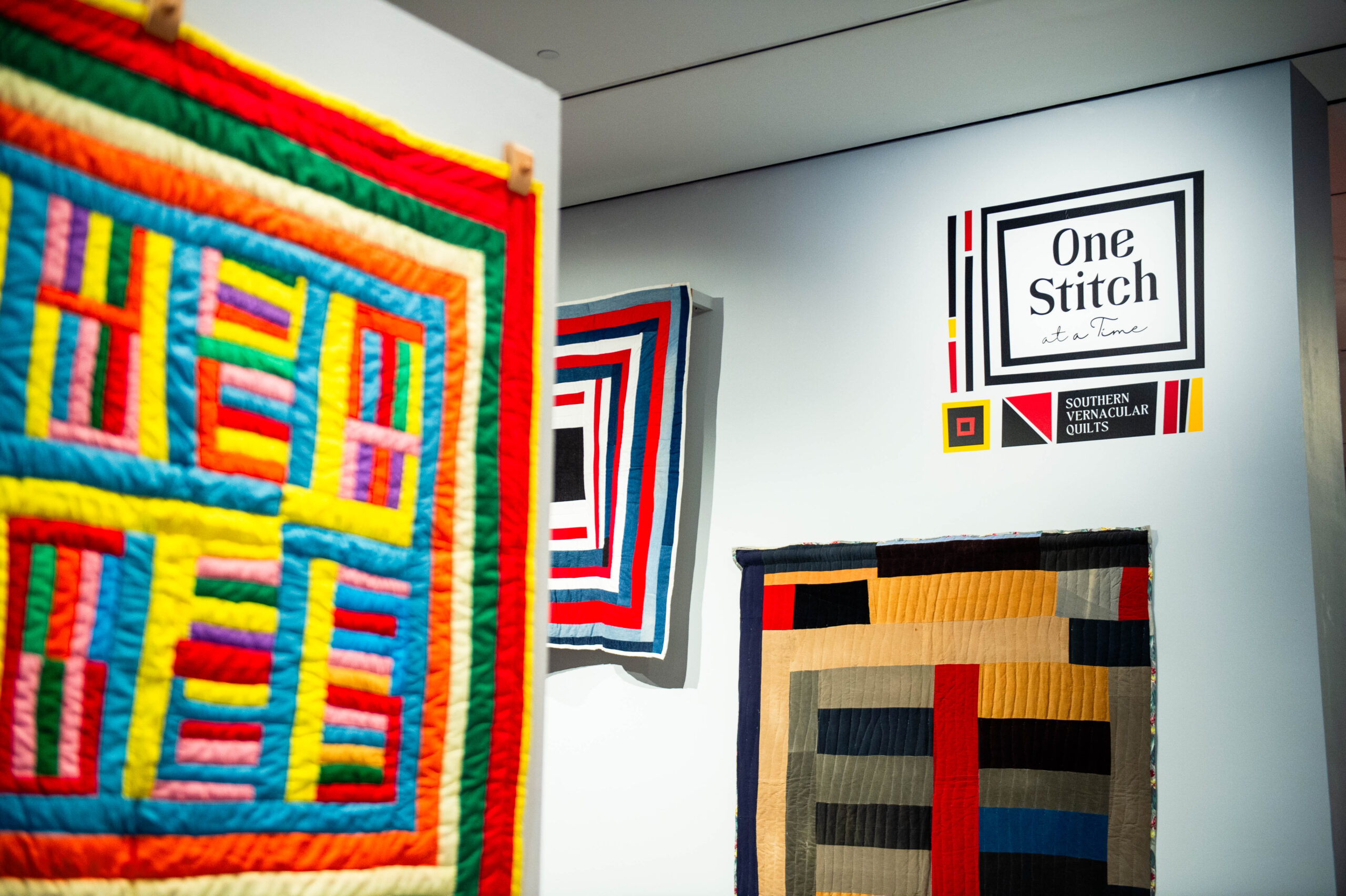
Quilts are trendy. Experience their beauty and significance at the LSU Museum of Art’s new exhibition, ‘One Stitch at a Time’
Draped across a bed, or around the shoulders of a celebrity, quilts have become both a stylish design trend and a sought-after art form. “One Stitch at a Time, Southern Vernacular Quilts,” a new exhibition at the LSU Museum of Art, celebrates the history and cultural significance of quilting. Now through June 23, marvel at 16 handmade works by self-taught quilters, including several by the nationally renowned quilters of Gee’s Bend, Alabama.
The featured quilts are on loan from the collections of Florida art collector and FATVillage Arts District creator Doug McCraw and the Hilliard Art Museum at the University of Louisiana at Lafayette. They include pieces by O’tesia Harper, Sarah Mary Taylor, Yvonne Wells, Chris Clark and other well-known quilters. Patrons will see several narrative quilts, intended to relate stories or scenes, as well as geometric quilts in vibrant colors and improvisational patterns. Some of the quilts were produced during the Civil Rights Movement by a collective of women in Gee’s Bend called the Freedom Quilting Bee, which raised money for the movement through quilt sales.
|
|
Museum Educator and Public Programs Manager Brandon V. Lewis says that quilting’s significance stems from its fusion of creativity and thrift. Dating back centuries, women have collected cast-off pieces of fabric to assemble blankets and bedding to provide household comfort and beauty. Southern quilting is similar to soul food and Cajun food traditions, he says, since it results from the useful transformation of discarded items.
“Quilting is a huge part of African American culture, because it’s a testament of a group of people who were given scraps they were able to create into art,” Lewis says. “It’s amazing to see these beautiful pieces and understand they’re not just an art form but something originally made to keep warm.”
Gee’s Bend quilts have been nationally recognized for their geometric whimsy and spontaneous style. An isolated town in south-central Alabama, the rural community is home to generations of families who trace their ancestry to the slaves who toiled on the plantation of landowner Joseph Gee. Following emancipation, many former slaves remained in the area as sharecroppers.
In the 1990s, Gee’s Bend quilting was discovered by the late Bill Arnett, an Atlanta-based prolific collector of African American art. Arnett and his nonprofit, Souls Grown Deep, helped bring national attention to Gee’s Bend. Today, more than 30 leading art museums, including the Metropolitan Museum of Art, have Gee’s Bend quilts in their permanent collections. The LSU Museum of Art is home to a Gee’s Bend quilt by Mary Lee Bendolph, a blue- and red-hued work made of cotton, corduroy and velvet. Quilters continue to reach new audiences via sales on platforms like Etsy.
On Sunday, May 5, “One Stitch at a Time” will feature a free companion event as part of the museum’s Access for All series. Held from 1-4 p.m., the event includes interactive, quilt-themed craft projects and a quilting bee demonstration led by Brenda Harris, director of the Southern University Quilt Lab. The Quilt Lab is part of Southern’s Department of Family and Consumer Sciences and preserves the art of quiltmaking and teaches students practical sewing skills.
“The Access for All event will show the ins and outs of basic quiltmaking,” Lewis says.
And if that’s not enough quilting, you’re in luck.
Opening April 18, the LSU Museum of Art’s “Fierce Planets: Work from the Studio Art Quilt Associates,” features space-themed quilts and fiber art inspired by the work of Sabine Stanley, the Bloomberg Distinguished Professor at Johns Hopkins University in the Department of Earth and Planetary Sciences and the Space Exploration Sector of the Applied Physics Lab, and author of the book, What’s Hidden Inside Planets?
The LSU Museum of Art is located on the fifth floor of the Shaw Center for the Arts in downtown Baton Rouge. For more information, lsumoa.org.
|
|
|




